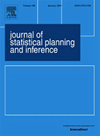This is a broad based journal encompassing all branches of statistics, under Planning and Inference. Planning is concerned with diverse methods of data collection, and Inference deals with data analysis and interpretation leading to statistical decisions. The major areas covered include design and analysis of experiments, sampling, parametric, semi-parametric and non-parametric inference, multivariate analysis, decision theory, sequential analysis, clinical trials, reliability and life testing, resampling and Monte Carlo techniques, probabilistic modeling and data analysis, etc.Papers on Time Series, Spatial Statistics, Information Theory and Econometrics are also welcomed. Articles dealing with the Bayesian approach are particularly encouraged.The general field of inference for dependent data is emphasized. This includes, among others, random fields, general stochastic processes, semimartingales, and quasilikelihood.A large variety of statistical problems, notably those in statistical planning, necessarily involve combinatorial or discrete mathematics. One special feature of this journal is that it specifically encourages papers in all branches of combinatorial mathematics which have some bearing on statistical problems.The journal also encourages papers on the application of statistics to scientific problems. It welcomes research papers, survey articles, book reviews and material for the Statistical Discussion Forum.One main characteristic of this journal is that all newly emerging areas within the purview of the journal are promoted and emphasized. Also, within the well-established traditional areas, every effort is made to locate changes and promising new subfields. In order to achieve these goals, the Editorial Board is updated from time to time, in response to the new developments and changes in research trends.
